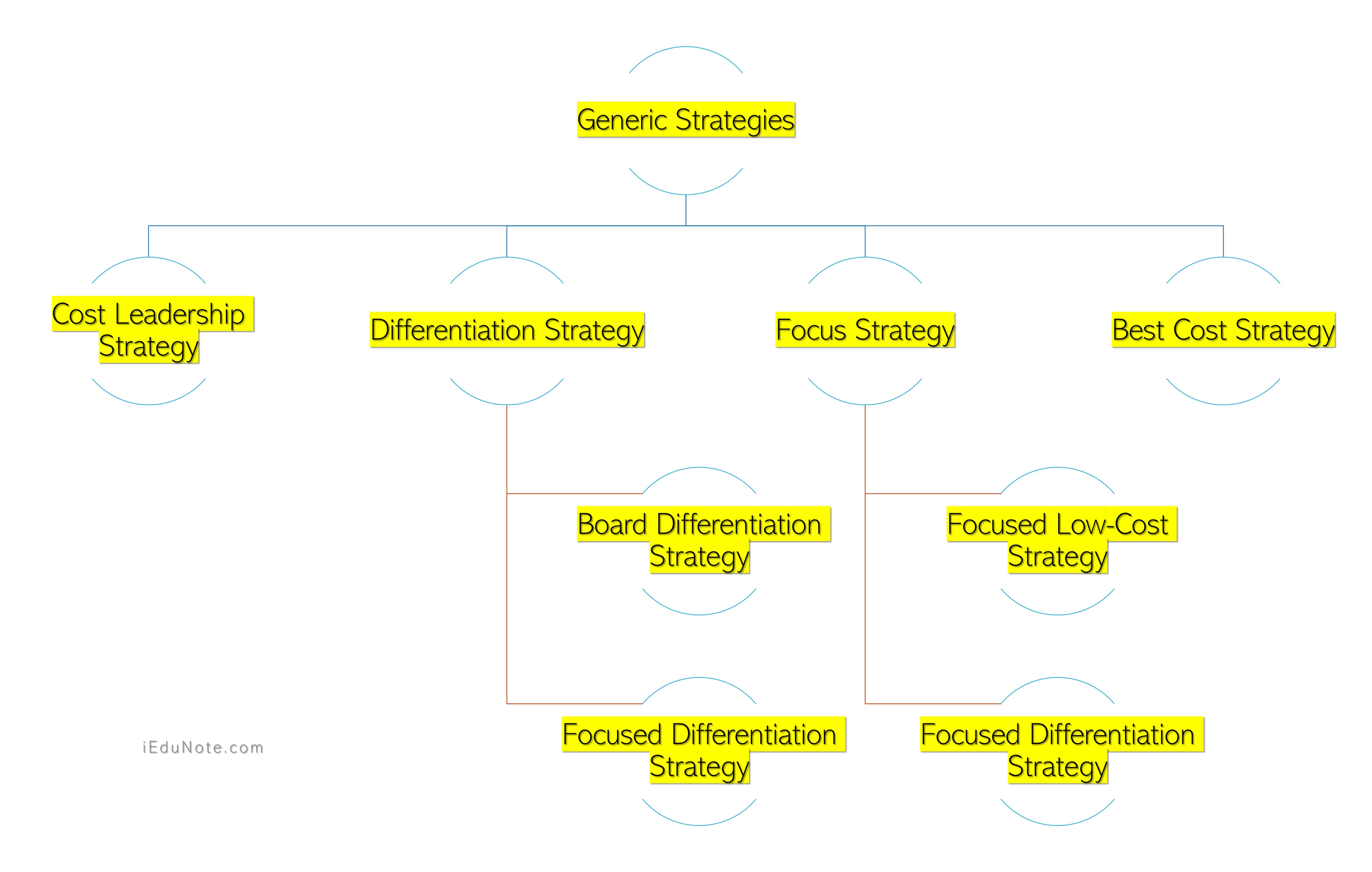Michael Porter originally identified three types of competitive strategies: Cost Leadership Strategy, Differentiation Strategy, and Focus Strategy. The generic strategies can be applied in any business organization irrespective of the size and nature of products.
Because of their susceptibility to common use by all business enterprises, they are labeled as generic strategies. These are, in fact, basic types of competitive strategies.
However, Porter’s three generic strategies have been extended to 4 basic competitive strategies by some other researchers and authors, such as Thompson, Strickland, Gamble, and Jain.
In addition to the generic strategies, there are also other competitive strategies that a company may employ for improving an organization’s competitiveness.
These strategies will be discussed in the next chapter under the caption of “Complementary Strategies” because of their role in complementing the generic strategies for achieving competitive advantage and ensuring sustainable development of organizations.
4 Types of Generic Strategies

The 4 generic strategies are;
- Cost Leadership Strategy.
- Differentiation Strategy.
- Broad Differentiation Strategy.
- Focused Differentiation Strategy.
- Focus Strategy.
- Focused Low-Cost Strategy.
- Focused Differentiation Strategy
- Best Cost Strategy.
They can further be categorized into 5 types of generic strategies are;
- Cost Leadership Strategy / Low-cost provider strategy.
- Broad Differentiation Strategy.
- Focused Differentiation Strategy.
- Focused Low-Cost Strategy.
- Best Cost Strategy.
The generic strategies are labeled as the basic competitive strategy options for a business firm.
Such competitive strategies always aim at securing competitive advantages over the competitors m the marketplace.
Business firms, endeavor to achieve competitive advantages by giving customers superior value, which’ performing value chain activities differently than rivals and building competencies and resource capabilities, that are not readily matched.
Conclusion
A manufacturing company may decide to employ any one of the generic strategies, or it may opt for a combination of more than one strategy.
The most important thing is that to be successful with using generic strategies, the company must keep a constant eye on the developments in the environment so that it can regularly align its sources of competitive advantages with the changing’ environment.